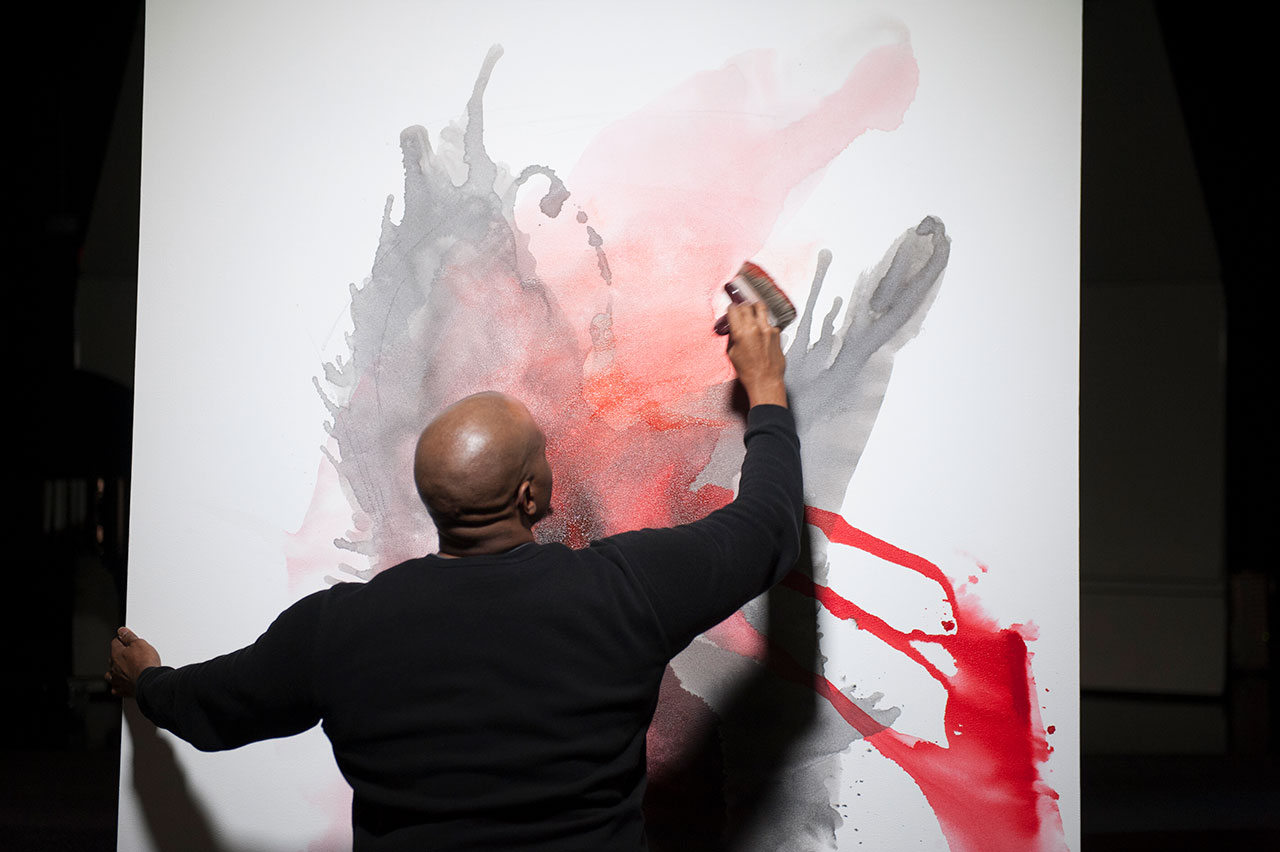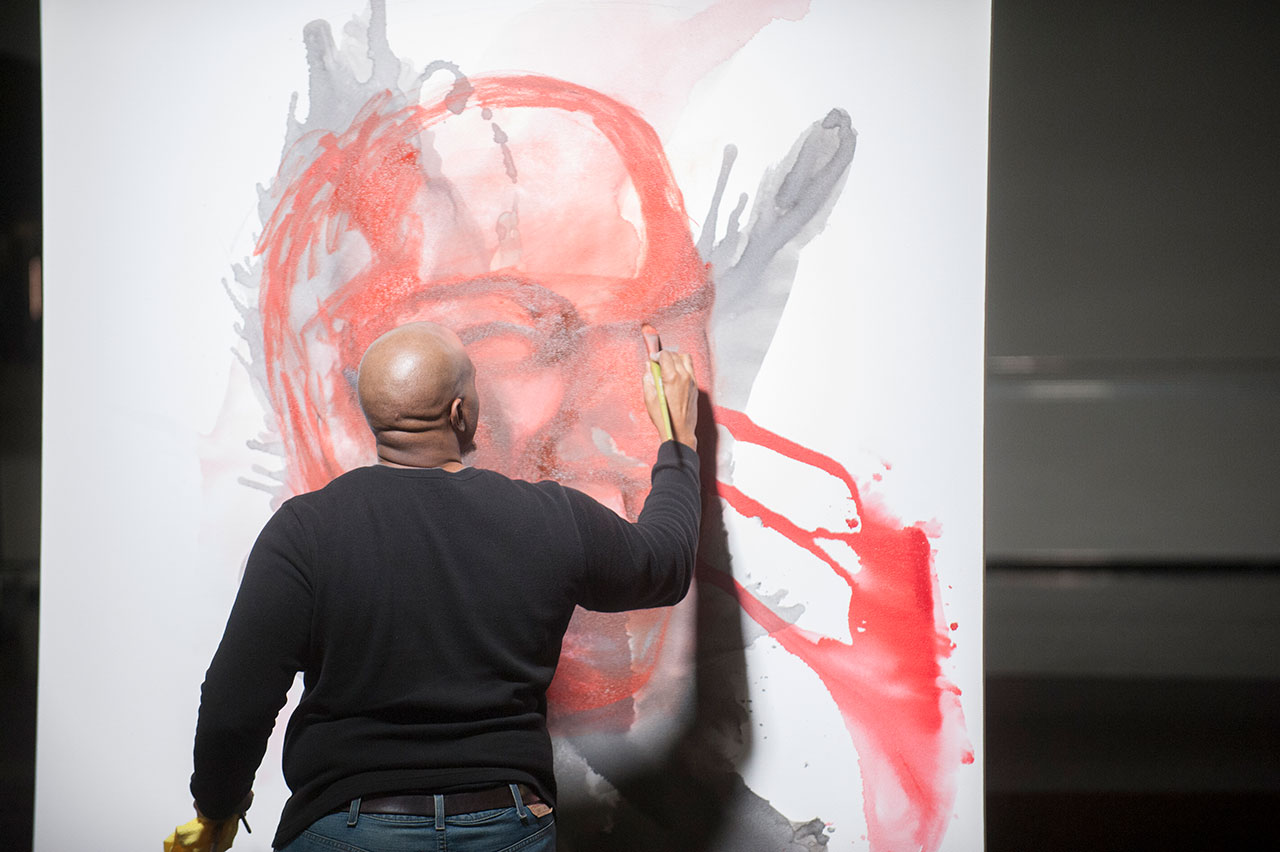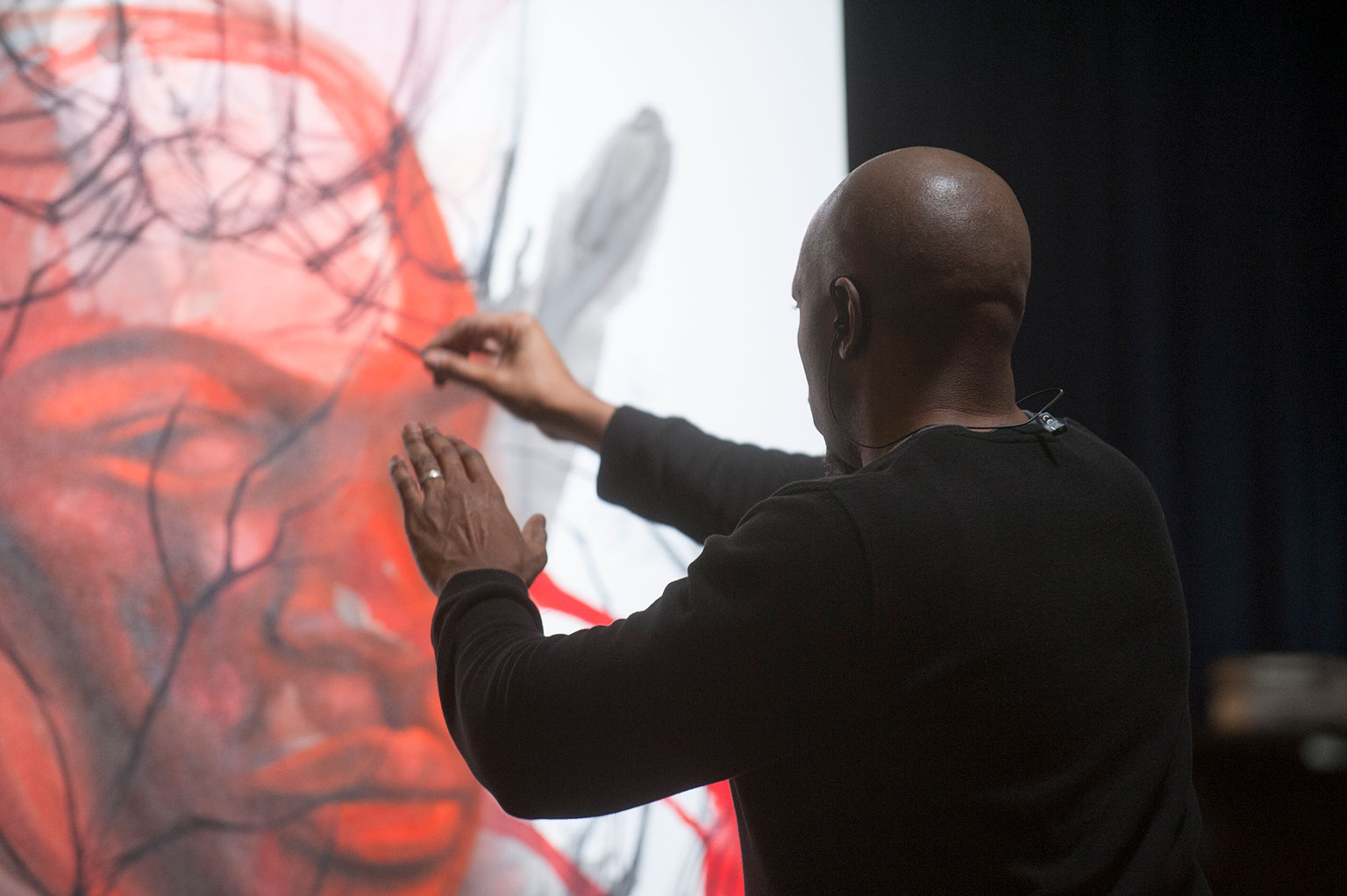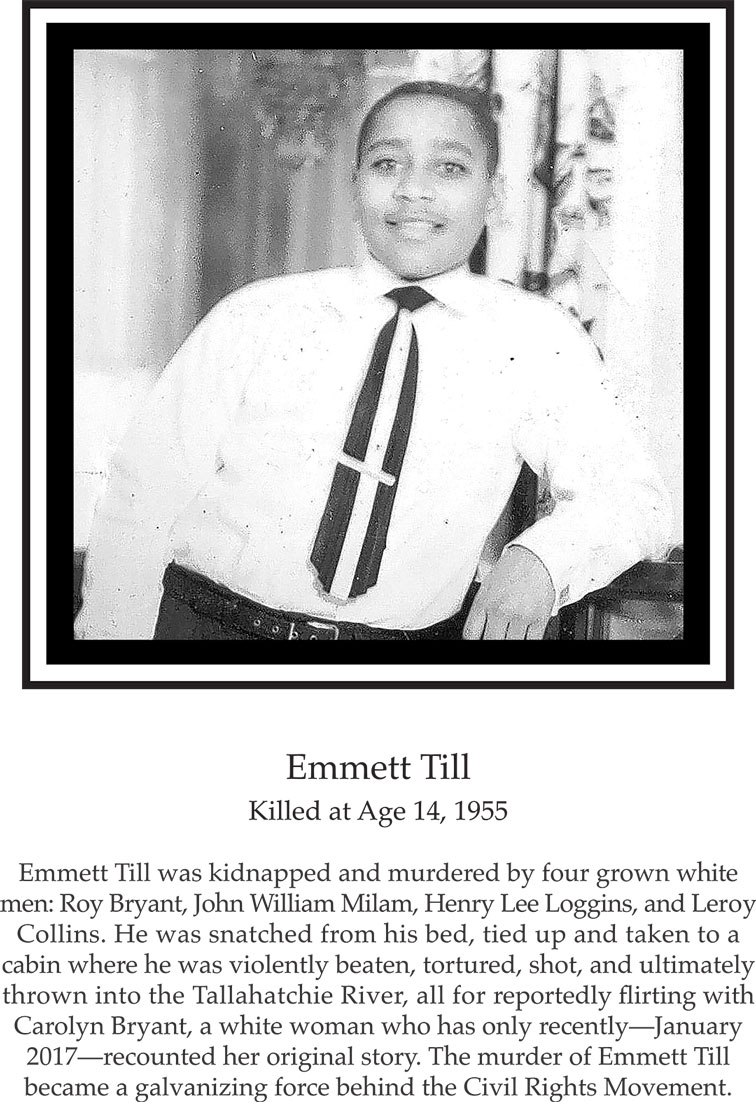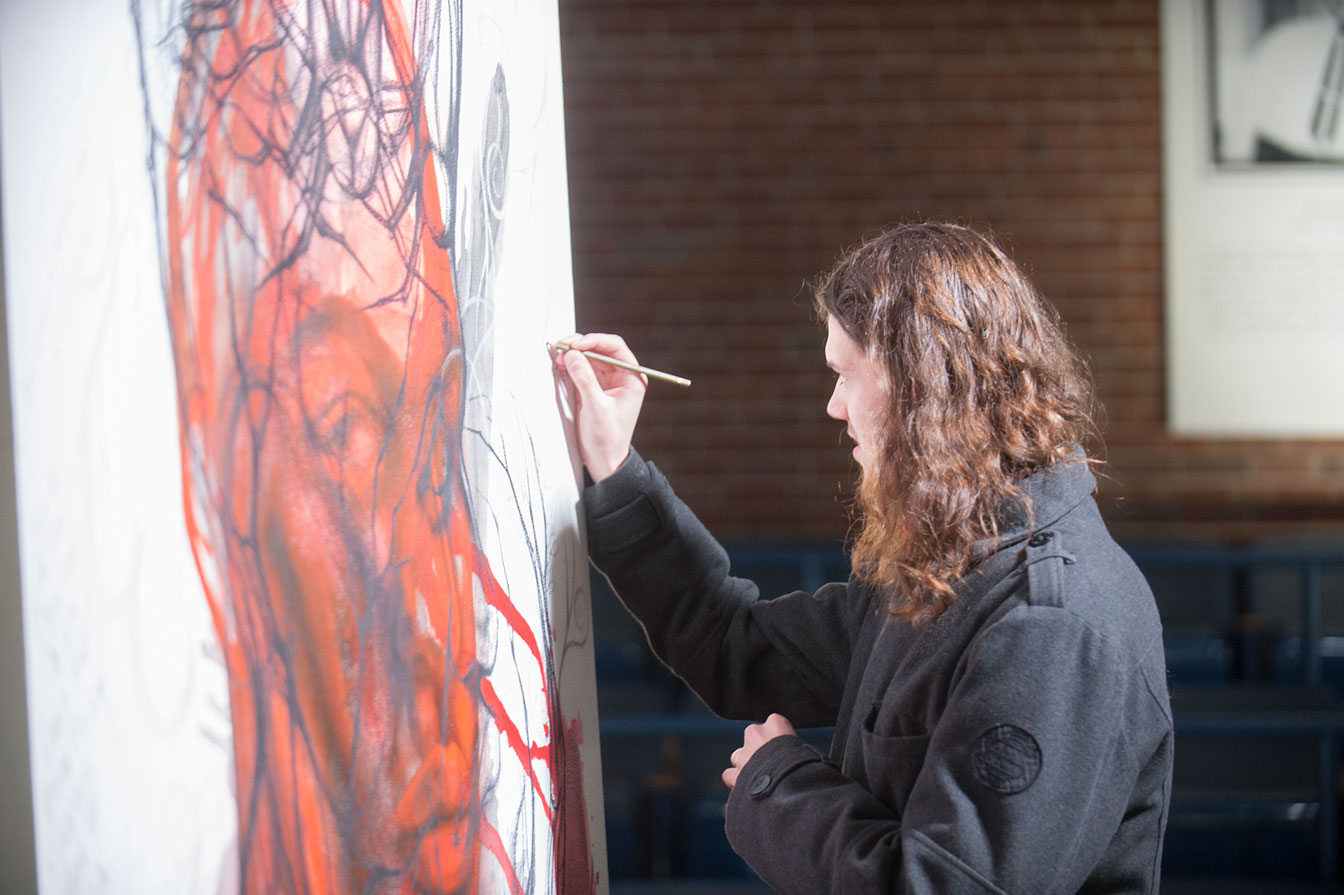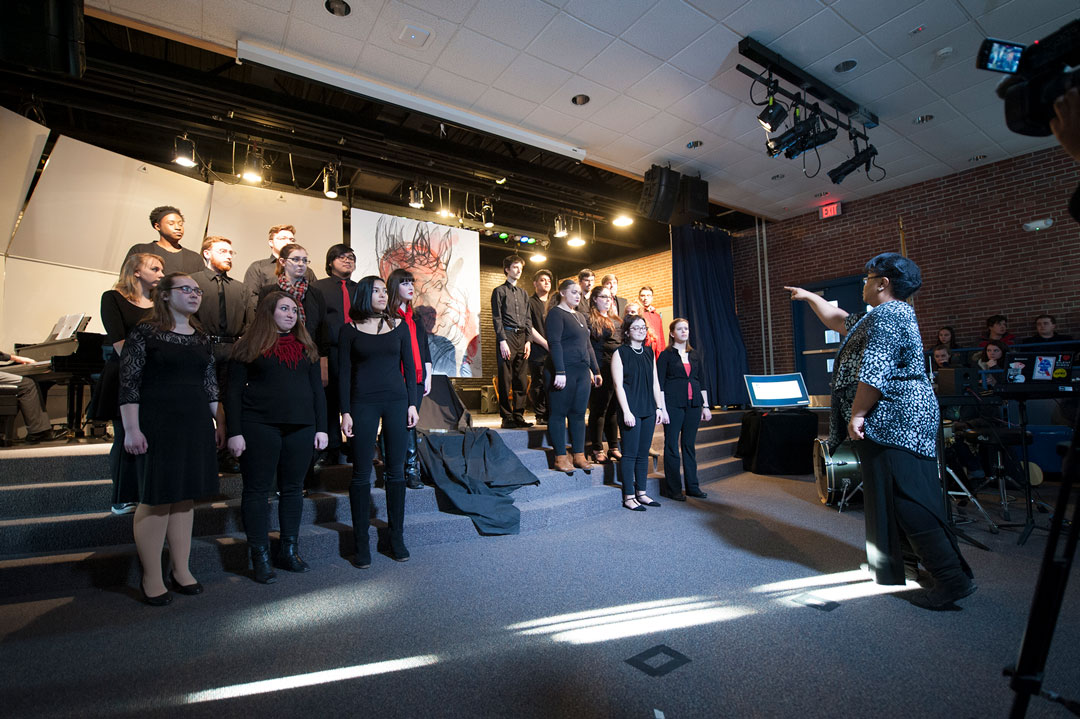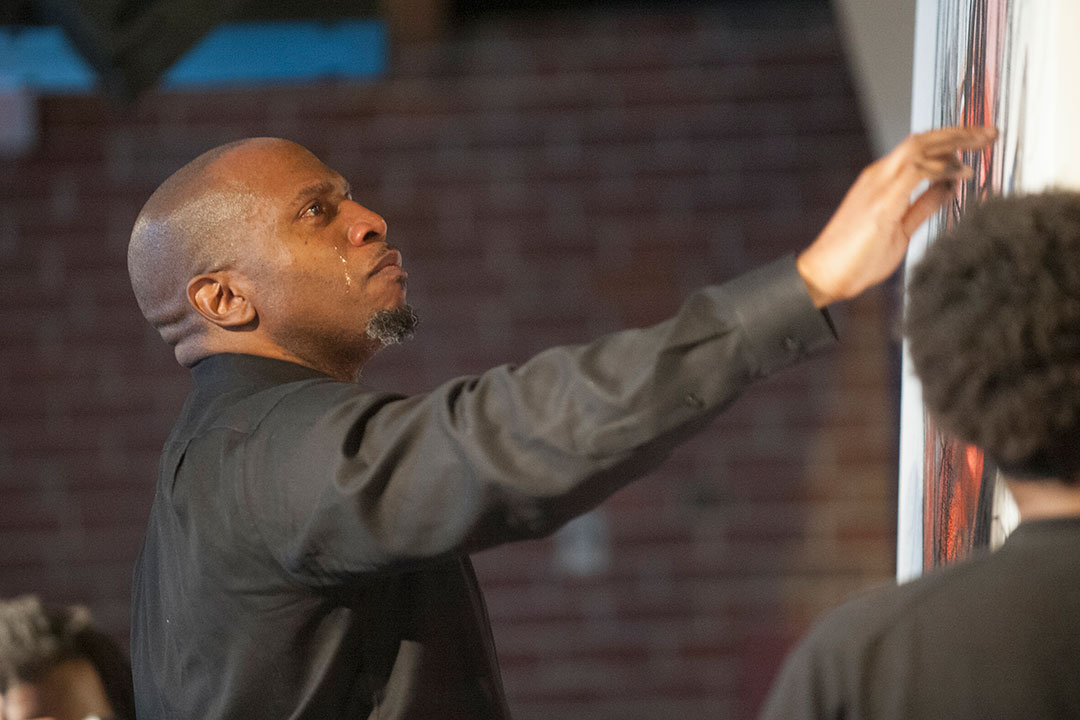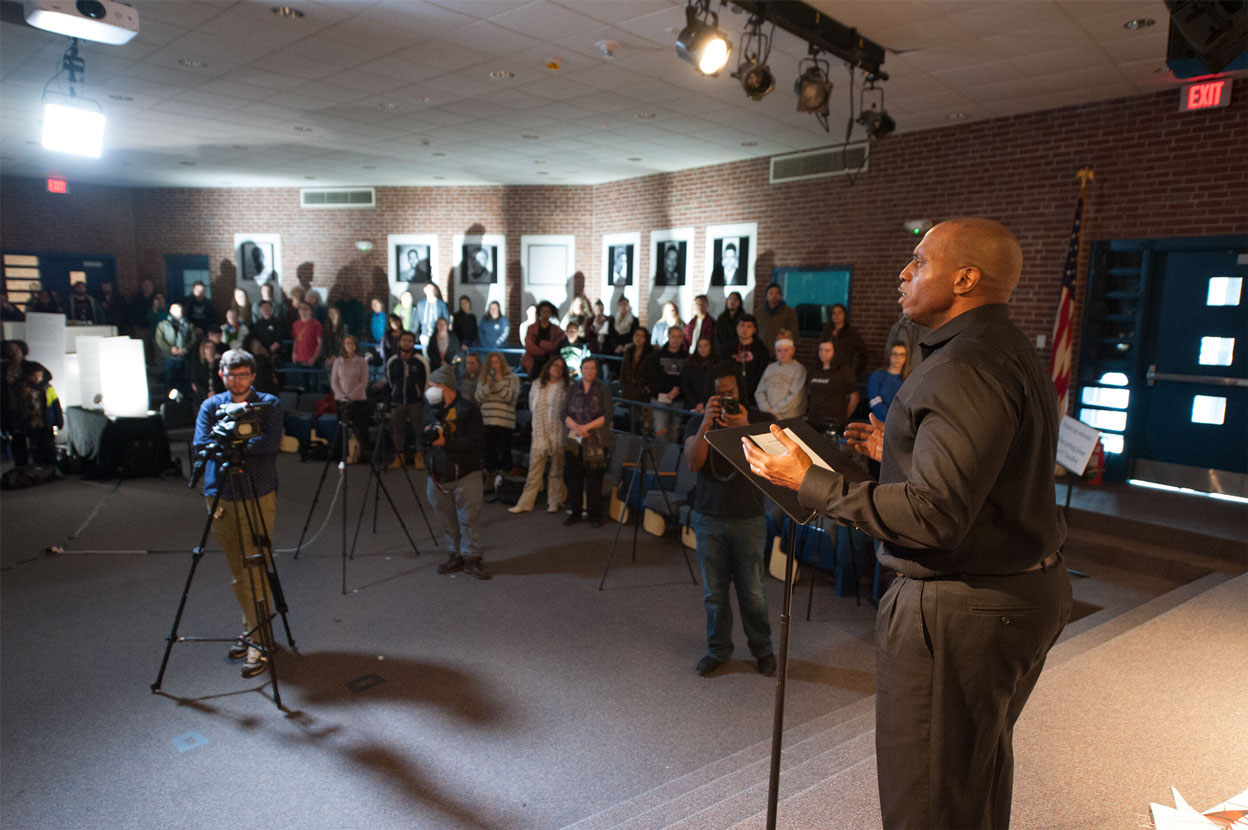17 Years Boy
Images, Sounds, and Words Inspired by the Life and Death of a Young Black Boy
Consisting of an ephemeral portrait painting, and time-based, multimedia installation, 17 Years Boy is inspired by the life and untimely death of Trayvon Martin, who was killed at the age of 17. The project, which started on February 5, 2018—on what would have been Trayvon Martin’s 23rd birthday—discussed the issue of Black boy subjugation in the United States, but also highlighted the historical and present-day issue of the black male spectacle in public space. It was conceived in an effort to humanize Trayvon Martin, whose identity in causal and academic discourse is largely conceptual. While Martin’s story was the impetus for the project, it ultimately included the stories of several generations of black boys who had befallen a similar fate. The auditorium that housed the project became a space of mourning, commemoration, and celebration of 17 other boys whose lives ended too tragically soon.
The “live painting” performance at the start of this project consisted of a large scale portrait of Trayvon Martin adorned with a Crown of Cicadas (an allusion to his age at time of death), that was created in a public performance space over 17 hours—each hour representing a year of his life. The entire 17-hour process was broadcast live over the Internet, to recall the public spectacle and discourse around Trayvon’s body and character after his death. Amid live musical performances, audio, visual, and textual installations, I destroyed the final portrait alongside 17 students and faculty members, who were chosen by a lottery system that I created as part of the performance. This communal, ritual destruction pointed to our collective complicity in dehumanizing Trayvon, and other black boys, with our casual discourse.
17-hour Live Painting Performance and Installation that I launched in response to an outbreak of racist activity on my campus. For 17 hours—spread out over 4 days—I painted a portrait of Trayvon Martin in a performance space that was converted into a full-room installation that addressed the issue of black boy subjugation in the USA. Over the 4 days, professors brought their classes and encouraged them to view the entire exhibition and document their thoughts in essays drawings, while in the space.
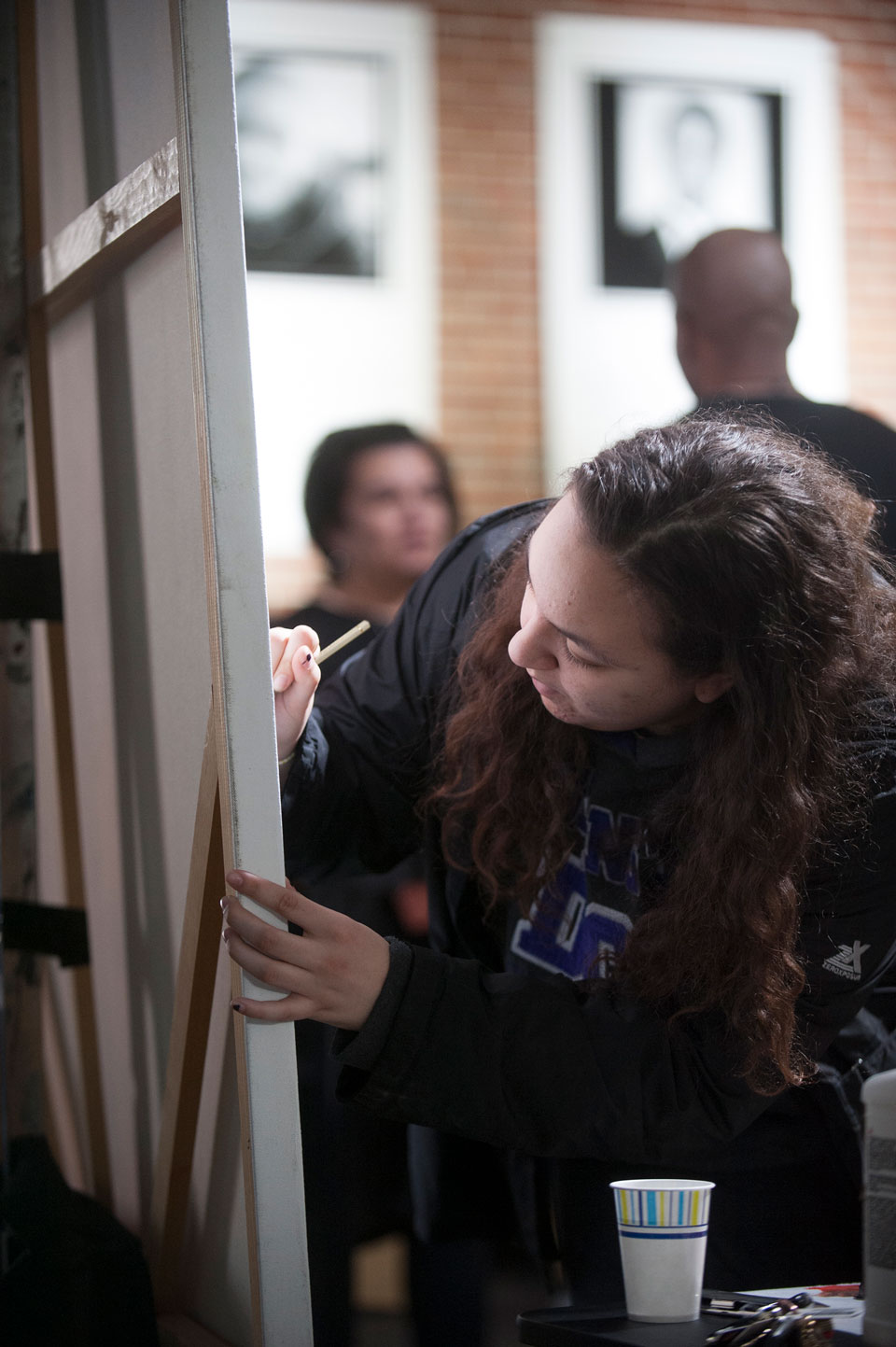
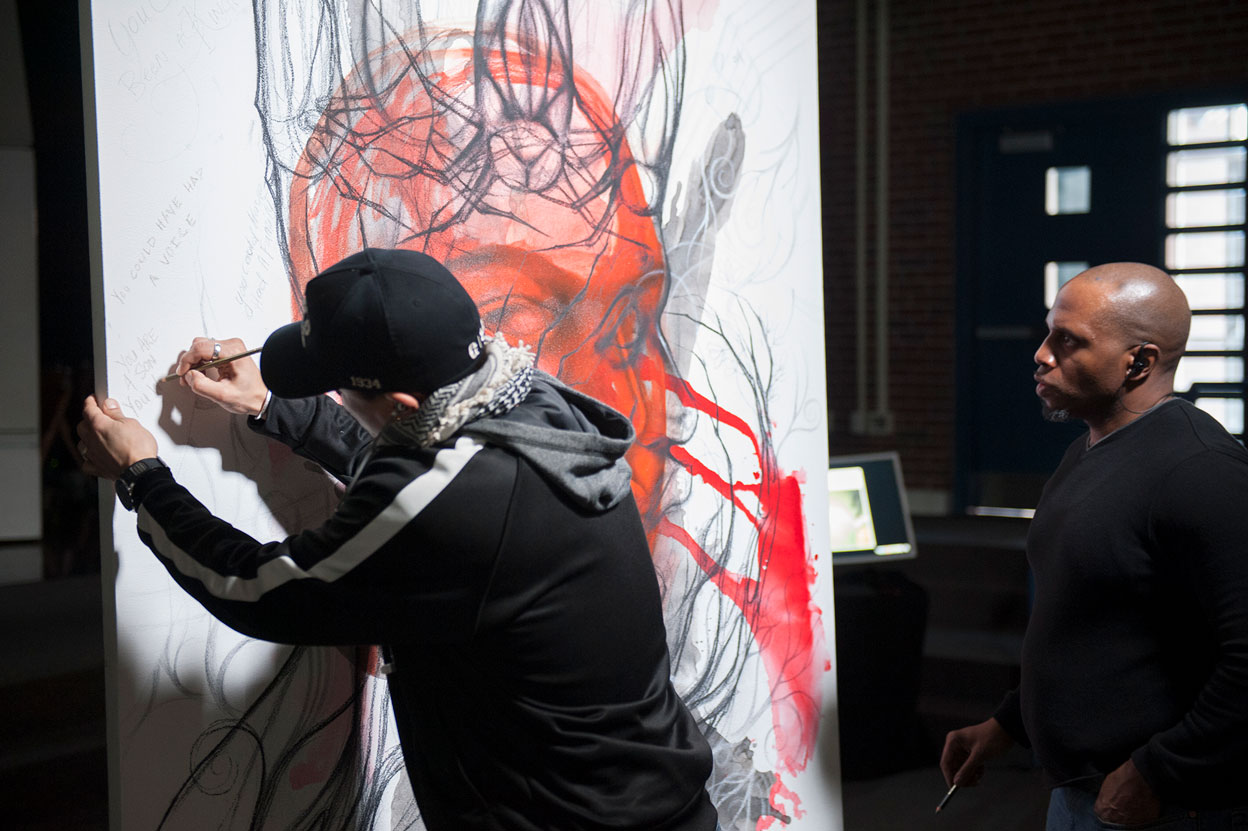
I was in an unexpected emotional state of profound sadness as I drew lines on the symbolic portrait of Trayvon – lines that I knew I would soon trace with a box cutter as I destroyed the artwork. The atmosphere in the auditorium was also somber, though the audience was not yet aware of my intention to destroy t e image I had spent 17 hours creating.
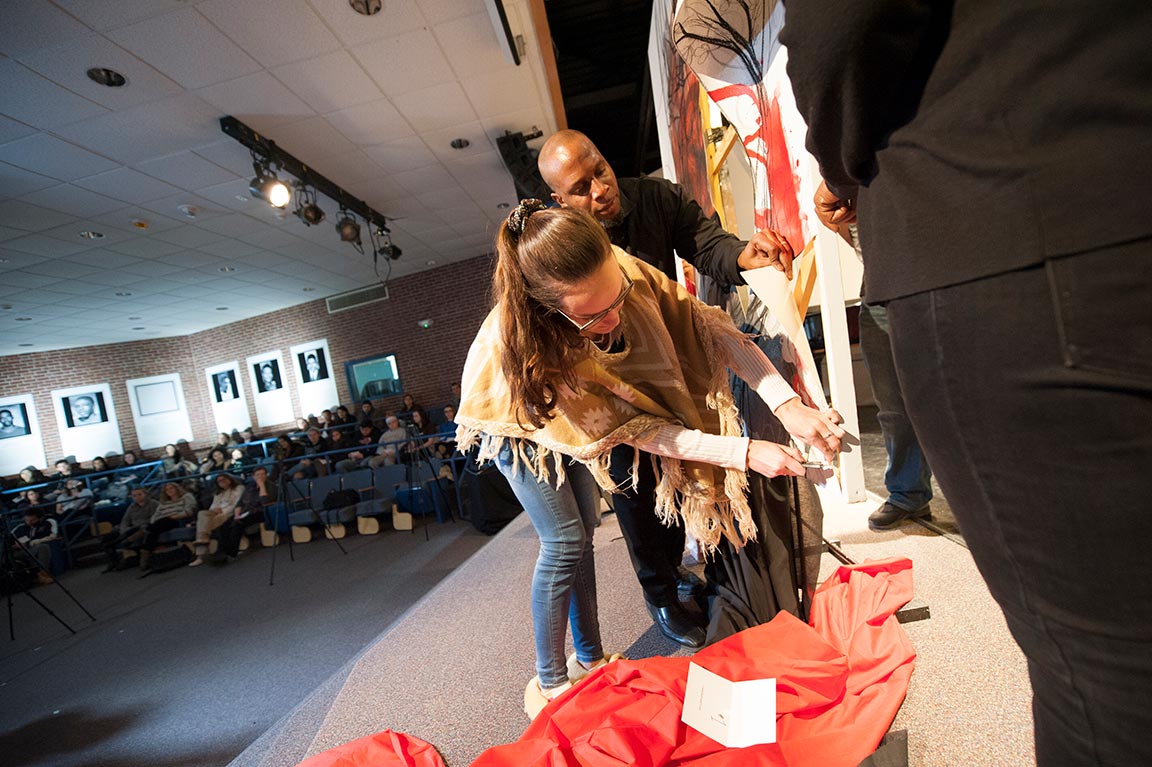
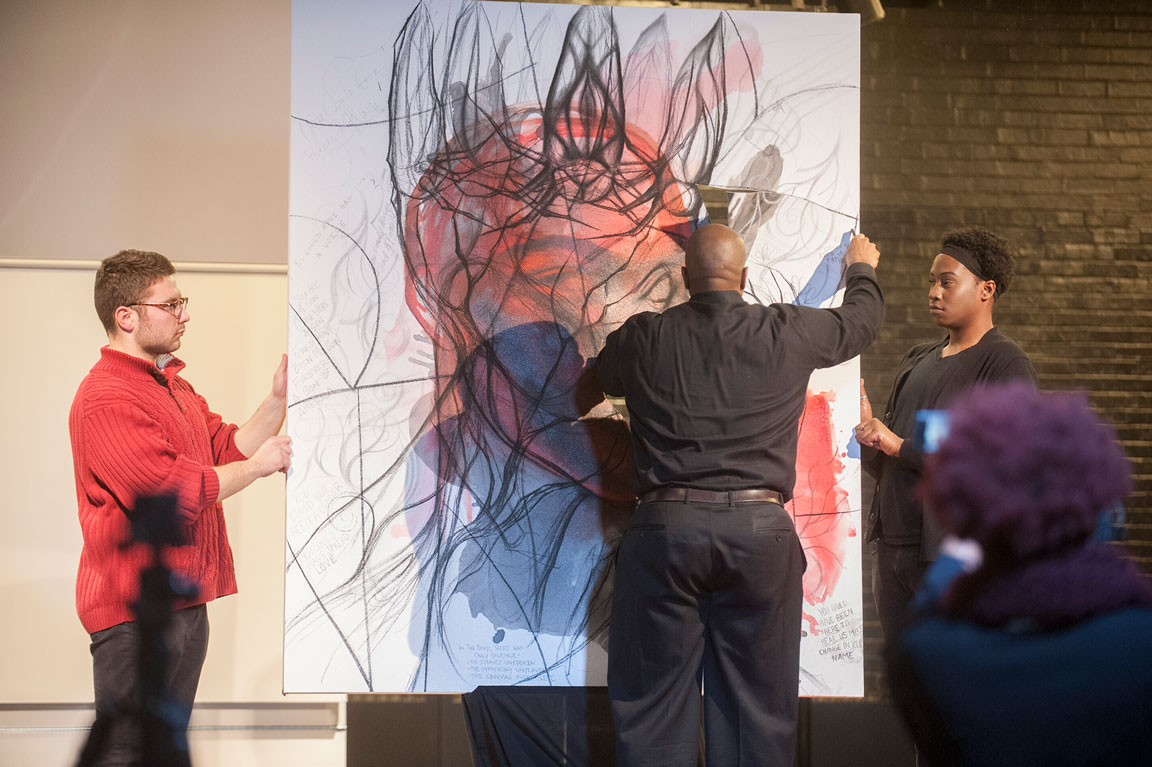
I was in an unexpected emotional state of profound sadness as I drew lines on the symbolic portrait of Trayvon – lines that I knew I would soon trace with a box cutter as I destroyed the artwork. The atmosphere in the auditorium was also somber, though the audience was not yet aware of my intention to destroy t e image I had spent 17 hours creating.
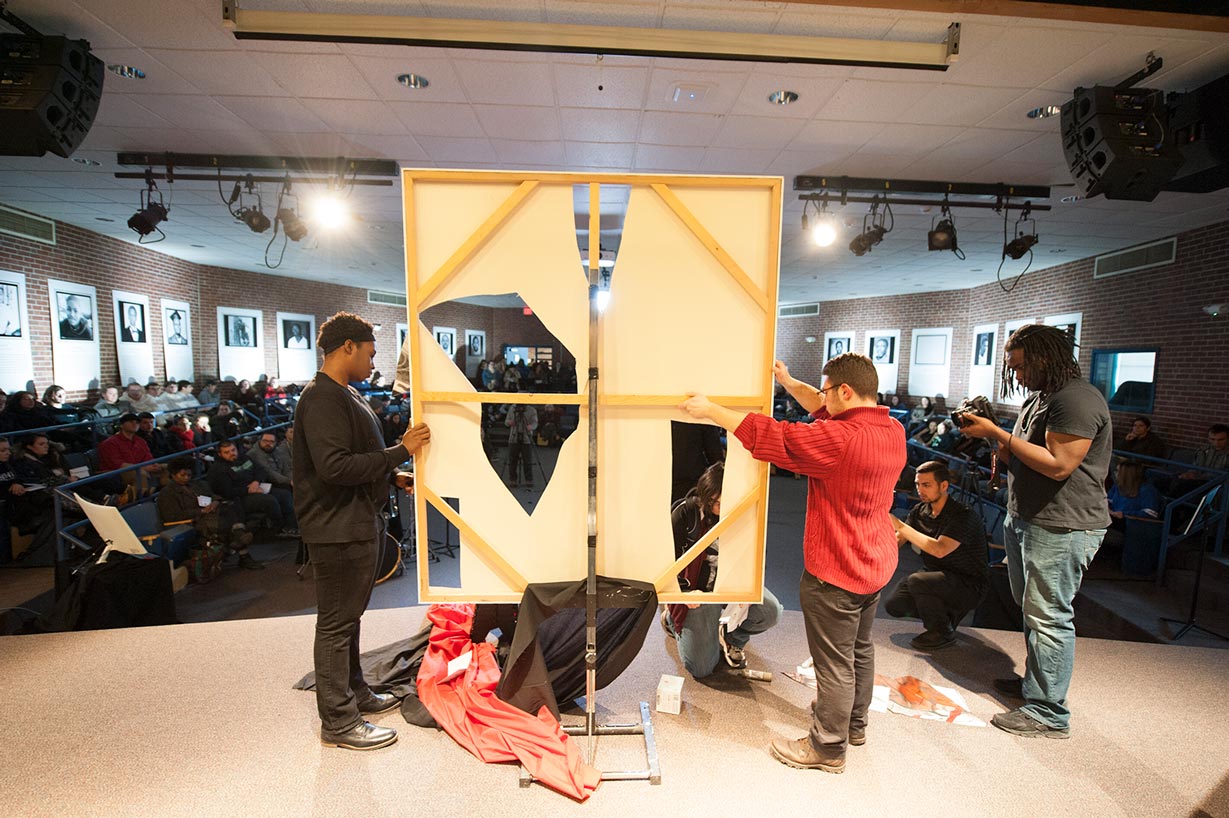
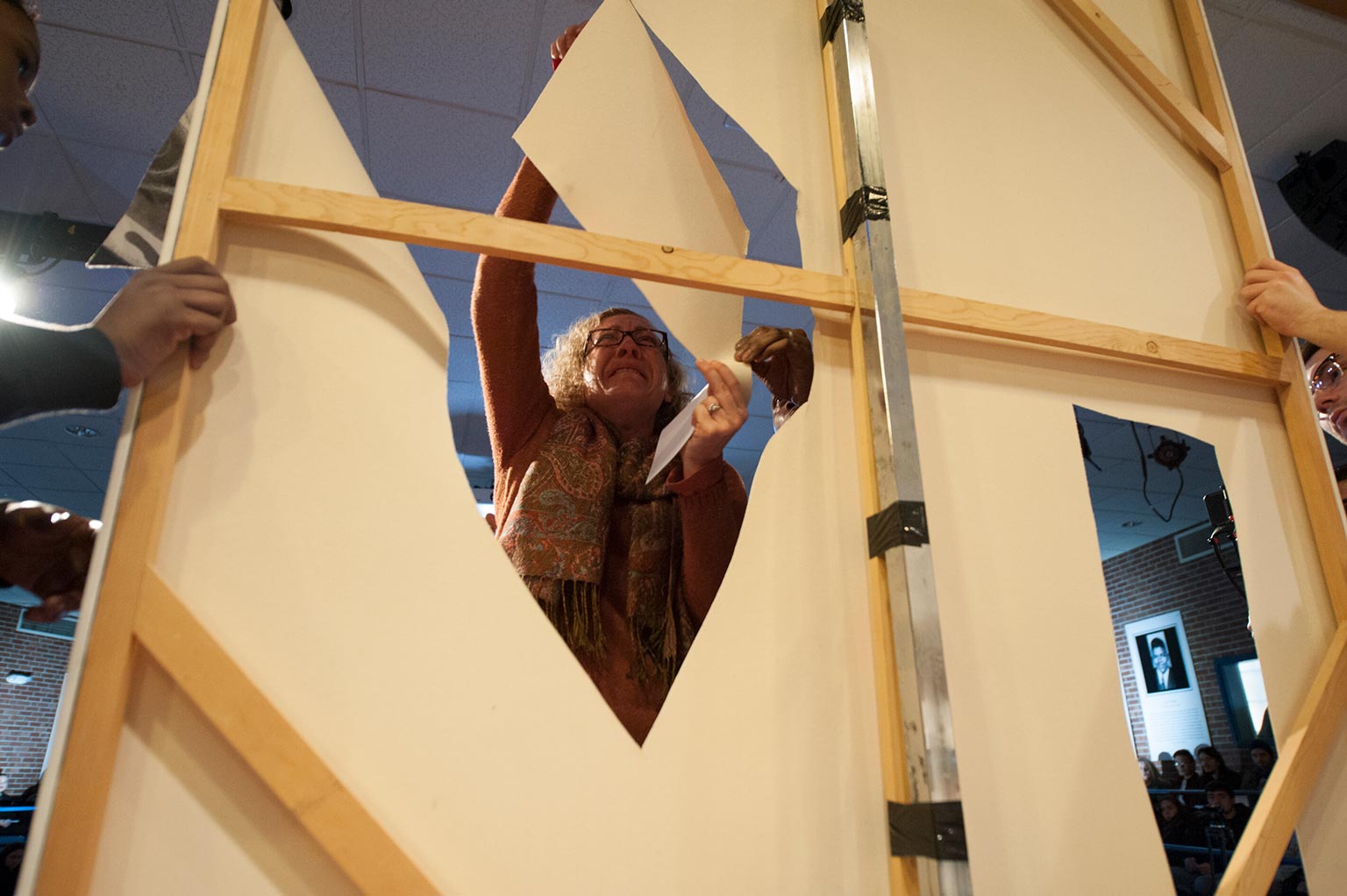
The 17-hour long performance came to an end once the painting had been ceremoniously destroyed, at which time I sang the Negro National Anthem, “Lift Every Voice and Sing.” The song, written by James Weldon Johnson, tells the story of the African- American’s journey through hardship and uncertainty to triumph and hope.
“Slowly Built, Quickly Taken” A Documentary of Dr. Imo Nse Imeh’s 17 Years Boy, by Darrius Mylze Johnson
In February 2018, Dr. Imo Nse Imeh, Professor of Art at Westfield State University, embarked on a unique time-based art project on the campus of his university, in response to a rash of racist incidents. The project, titled “17 Years Boy,” addressed prejudice and racism, especially towards black youth. Dr. Imeh featured the stories of Trayvon Martin and 17 other young men who befell fates similar to the teenager, their stories spanning an entire century, from 1915 – 2016. The project was multifaceted, incorporating rich contributions from the Music and English Departments, and Media Services to bring the stories of the featured young men to life.
Over a four-day period, artist and film-maker Darrius Mylze Johnson meticulously documented the unfolding events of the project, including the theatrical “Final Hour” of the live-painting performance, during which time the centralized portrait of Trayvon Martin was ceremoniously destroyed before a shocked and unsuspecting audience. This short film is an amalgam of Mr. Johnson’s witness of “17 Years Boy.”

